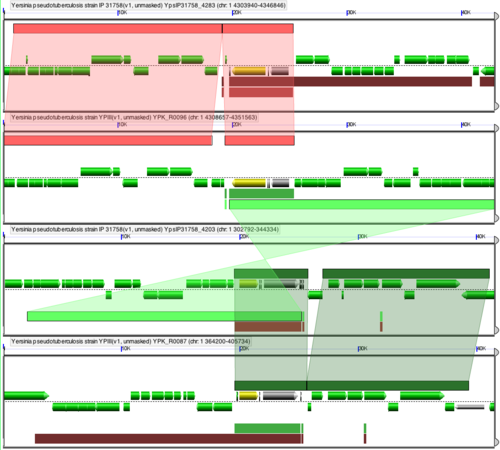Genomic inversion: Difference between revisions
Jump to navigation
Jump to search
No edit summary |
No edit summary |
||
| Line 4: | Line 4: | ||
===Definition=== | ===Definition=== | ||
A genomic inversion is when a region of a genome or chromosome gets flipped in place. These usually happen at genomic regions with nearly identical sequence, implying a mechanism similar to non-homologous recombination. | A genomic inversion is when a region of a genome or chromosome gets flipped in place. These usually happen at genomic regions with nearly identical sequence, implying a mechanism similar to [[non-homologous recombination]]. | ||
===Bacteria=== | ===Bacteria=== | ||
In bacterial genomes, inversion often occur at transposon or ribosomal gene sequences, and happen symmetrically around the [[origin of replication]]. The latter causes a characteristic pattern in [[syntenic dotplots]] called an [[x alignment]]. | In bacterial genomes, inversion often occur at transposon or ribosomal gene sequences, and happen symmetrically around the [[origin of replication]]. The latter causes a characteristic pattern in [[syntenic dotplots]] called an [[x alignment]]. | ||
Revision as of 17:28, 18 February 2010


Definition
A genomic inversion is when a region of a genome or chromosome gets flipped in place. These usually happen at genomic regions with nearly identical sequence, implying a mechanism similar to non-homologous recombination.
Bacteria
In bacterial genomes, inversion often occur at transposon or ribosomal gene sequences, and happen symmetrically around the origin of replication. The latter causes a characteristic pattern in syntenic dotplots called an x alignment.